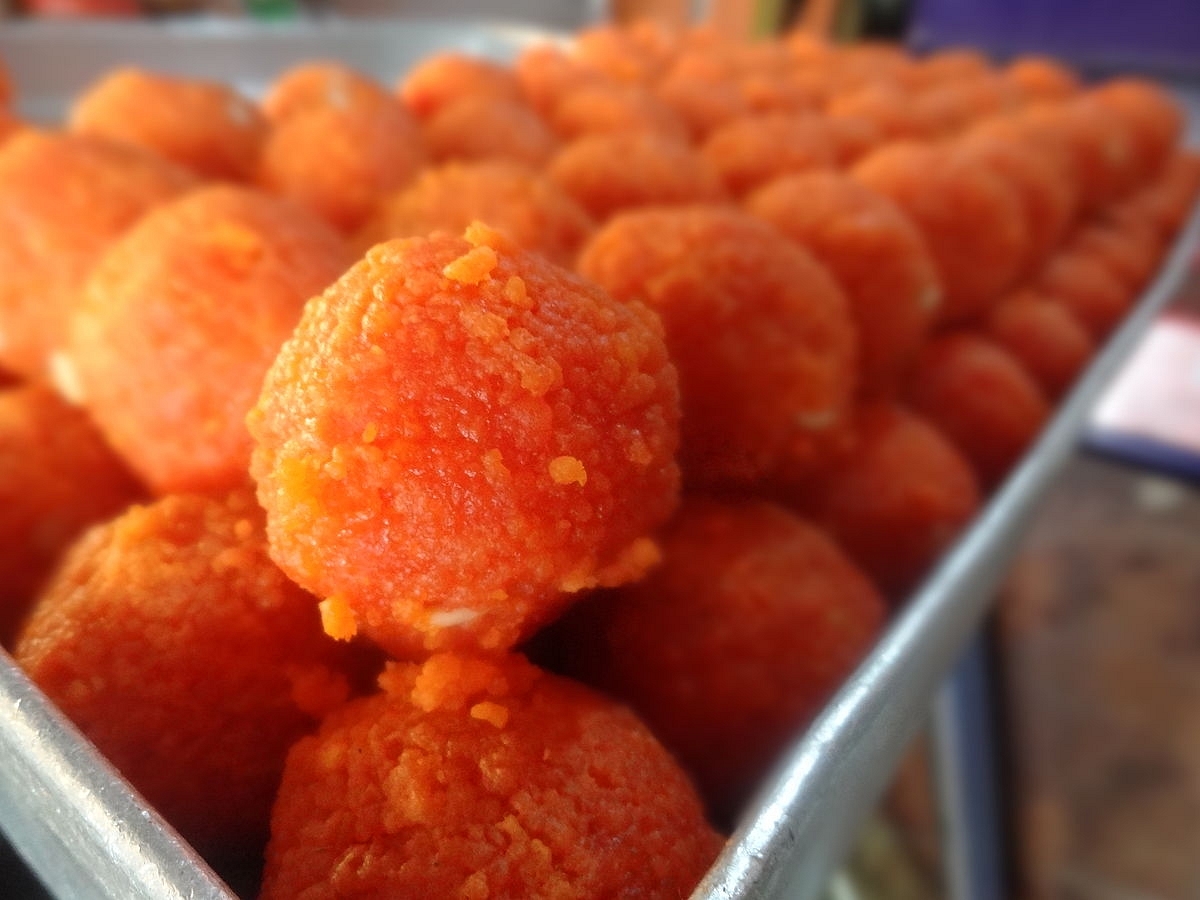Culture
Of Deepavali, Laddoos, And The Chhappan Bhog
- Some snippets of Indian history featuring laddoos, the chhappan bhog and the festival of lights

Boondi ka laddoo
Why do we celebrate Diwali? For a good part of north India, it is to mark homecoming of Rama, after he slaying Ravana. Move south and the celebrations happen a day before to celebrate Krishna’s slaying of Narakasura. Travel east and the joyous occasion is because Ma Durga is believed to attain the form of Kali on this day. For Jains, it is the day Lord Mahavira attained nirvana and for Sikhs, it is when Guru Hargobind was released.
While this explains Diwali’s pan-India presence, ever pondered about the sweets that are associated with the festival? How did they come about? Why Deepavali reminds one of motichur ladoo or why Kali Puja, which is east India’s cousin of Deepavali, is the time to relish a kosha mangsho? Or for that matter, what is chhappan bhog’s relation with the festival of lights? After all, chhappan bhog is a part of the Govardhan Puja, which is a day after Deepavali, and is celebrated to thank god for his graciousness for yet another good harvest. Of course, the legend is about how Krishna saved from Lord Indra’s ire by balancing Mount Govaradhan on his finger, sacrificing food and water for seven days and nights.
In fact, says culinary historian Jiggs Kalra, the main attraction of the chappan bhog thal that came to “Red Fort wasn’t only the numerous ladoos representing the culture and deepavali beliefs of each of the region along with paan that came from Golconda and Mewar, cherries from Srinagar and Jauzi Ka Halwa from Hyderabad, but also the namkeens that came from the various communities that held the reigns of trade and commerce of the kingdom.”
Introducing ElectionsHQ + 50 Ground Reports Project
The 2024 elections might seem easy to guess, but there are some important questions that shouldn't be missed.
Do freebies still sway voters? Do people prioritise infrastructure when voting? How will Punjab vote?
The answers to these questions provide great insights into where we, as a country, are headed in the years to come.
Swarajya is starting a project with an aim to do 50 solid ground stories and a smart commentary service on WhatsApp, a one-of-a-kind. We'd love your support during this election season.
Click below to contribute.
Latest